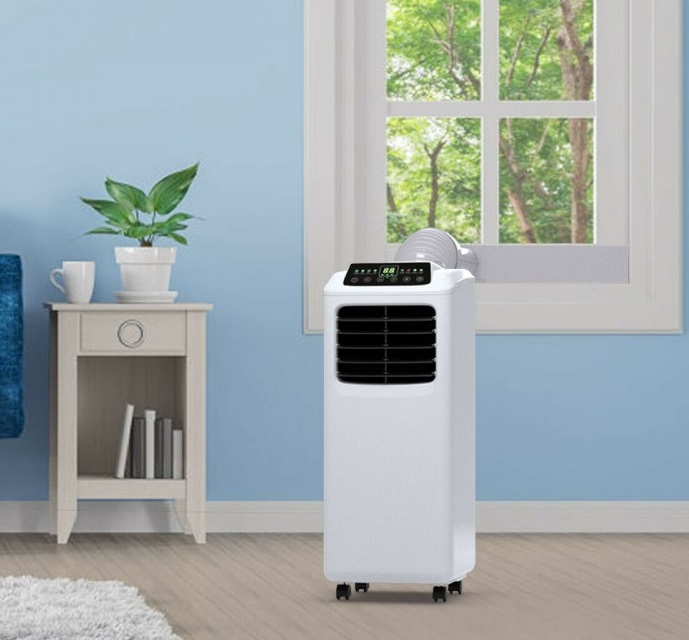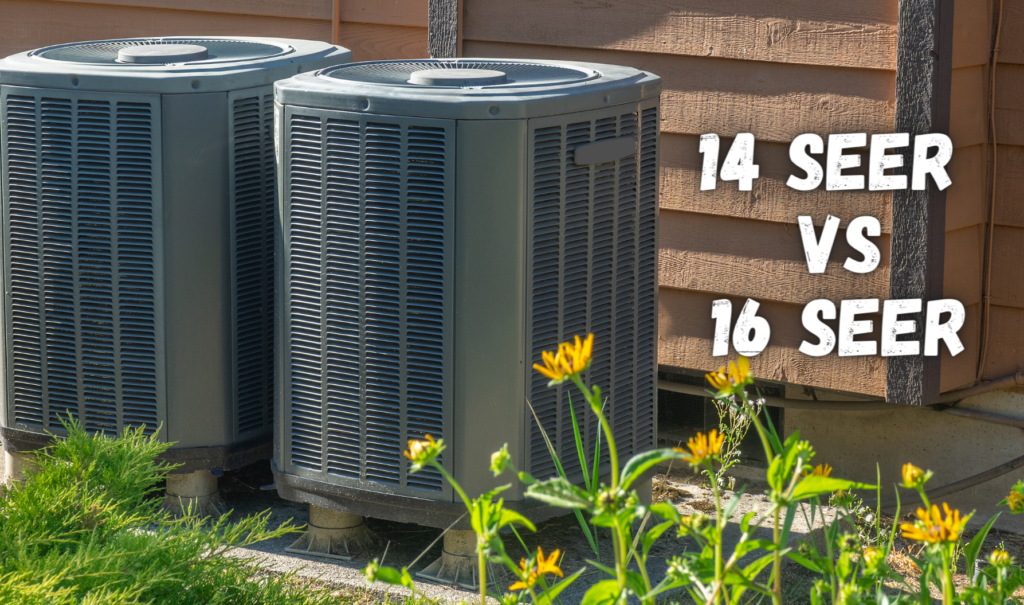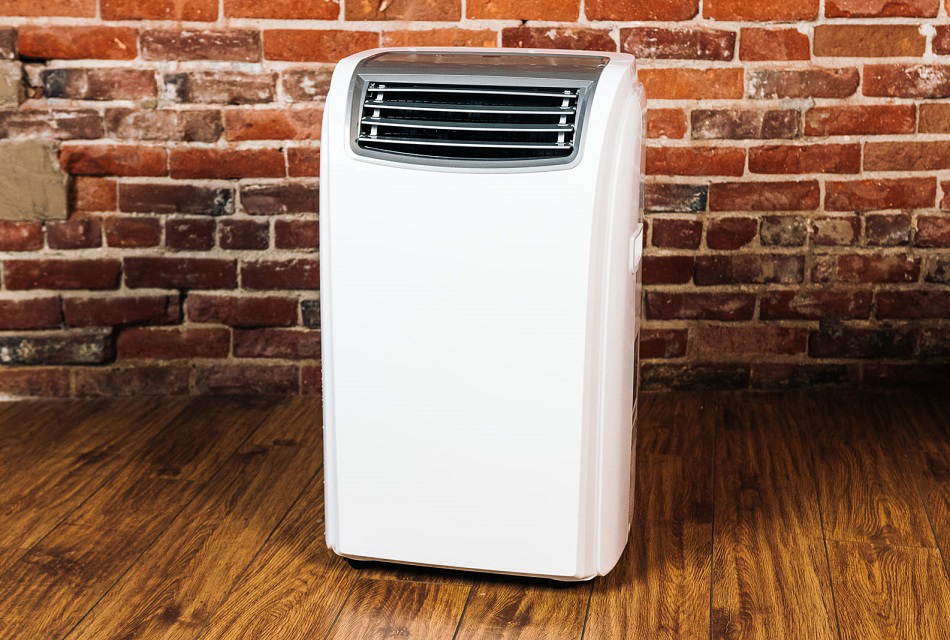

To stay cool all summer long, there’s nothing better than an air conditioner! But between a central air conditioner and a window-mounted air conditioner, which one should you choose?
To answer this question, you will need to know the differences between both. All the types of air conditioning systems have a variety of their advantages and downsides. Among the various types available, window and central AC systems are very popular. In this window units vs central air comparison article, we will see how the two AC units work, their advantages and disadvantages, and see how they compare to each other.
In any case, before deciding on which will be the right choice for you and your home, take into consideration the space you would like to cool or heat and what will be the most important feature for you when it comes to air conditioning.
Window units are air and heating conditioning systems which have all necessary components which central ACs have. But they are usually in portable boxes.
Window AC units are one of the most affordable options on the first purchase and the most optimals for small rooms or spaces.
The HVAC power of window systems are only suitable for small areas. For instance, the Frigidaire 5,000 BTU Window-Mounted Air Conditioner can only cool a space of 150 square feet. This means that to cool a whole home, each area will need its unit – one for the living room, one for the bedroom, another for the kitchen.
Window air conditioners work like other air conditioning systems. They suck in the warm room air, cool it down inside with the help of a special cooling circuit and a refrigerant, and blow the cooled air back into the room. The waste heat that is generated when the rooms are cooled is transported outside.
Most modern window air conditioners are equipped with innovative inverter technology. This means that the window air conditioner continuously determines the temperature of the air drawn in using a thermostat.
If this exceeds the value you entered, the refrigeration unit switches on automatically. If the room temperature becomes too low, the refrigeration unit switches itself off again. The performance of the compressor adapts continuously to the cooling requirement. The desired room temperature is kept constant.
According to most reviews, the MAW05M1BWT Window air conditioner, designed by Midea, is by far one of the most reliable and time-proven ones. It has 5,000 BTU capacity, Mechanical Controls, 7 temperatures, and 2 cooling and fan settings.
The advantages of window air conditioning systems at a glance are
Below is an overview of the disadvantages of window air conditioning systems:
Central ACs are systems that work throughout the house through ducts. The outdoor or condenser unit is usually located outside the house. Ducts can be connect from the heater through the attic. Centralized units have an outdoor unit and an indoor unit. However, in this case, the indoor unit will distribute the air through ducts to the different areas of the home.
Central air units are the most efficient of all types of air conditioning systems. They are very popular among homeowners as they are efficient, convenient, and durable.
A central air unit works by removing heat from the service room and transferring it outside the building. In essence, the functional principle of a central air conditioning system does not differ significantly from the functional principle of other refrigeration devices.
The movement of the refrigerant, its transition from a gaseous state to a liquid, takes place via two nodes: an evaporator and a condenser. The indoor unit contains the evaporator assembly and the condenser is part of the external device.
The general scheme of operation of the unit during air cooling is based on the fact that the air from the room enters the indoor unit with the help of a ventilation grille and a diffuser. It is then processed accordingly and returned to the room, but it is already cooled to the desired temperature.
Considering the way the duct/central air-conditioning system works, the arrangement of the ventilation ducts makes it possible to distribute low-temperature air flows over a large area of the property. The heat collected when the air cools is discharged into the street in the form of condensate.
Due to the properties of the device, duct-type air conditioning systems work on the principle of local air circulation, i.e. suction from the room and further processing of the air environment and the return of air that has already been cooled through the duct system.
There are inverter duct air conditioners with built-in capacity control, depending on the temperature of the air. The performance of such devices is higher, as are the possibilities.
By inversion of the alternating current in a direct and an inverse process, in which it becomes possible to achieve the required frequency of the alternating current, such duct devices save energy.
Centralized units work like any other air conditioning system. It, therefore, has some interesting advantages over other air conditioning systems.
Are central air conditioning systems all about the advantages? No! But perhaps the disadvantages do not seem so many compared to the advantages.
Below, we compare both types of air conditioning system, using criteria such as energy usage, ease of installation, performance, and cost
| Central AC | Window AC | |
| Energy usage | Central ACs use 3.5 kilowatts on average
|
Window ACs use around 0.5 to 1.44 kilowatts on average |
| Ease of installation | Installation process could be easier and less expensive only if you have a functioning duct system. | The overall installation process is simpler |
| Performance and efficiency | Central air units are very high-performing and efficient, with uniform cooling. | Window ACs are not as functioning as central ACs |
| Cost | Acquisition and installation costs of central ACs are higher, but operation costs, in relation to the cooling efficiency, are lower. | Acquisition, installation, and operating costs are lower |
Central air conditioning and window air conditioning systems work similarly. However, the centralized systems are more efficient than others but the purchase and installation costs may be higher, as we have seen in this window units vs central air conditioning comparison article.
The central air conditioning system is installed in the attic of your home and connected to an outdoor unit. The cooled air is distributed to the rooms of your house through a network of ducts. The interior temperature is uniform from one room to another. Meanwhile, the window-mounted air conditioning system which is made up of indoor wall units connected to an outdoor group can only cool the rooms they’re located in. The temperature of each room can therefore be adjusted as needed.





